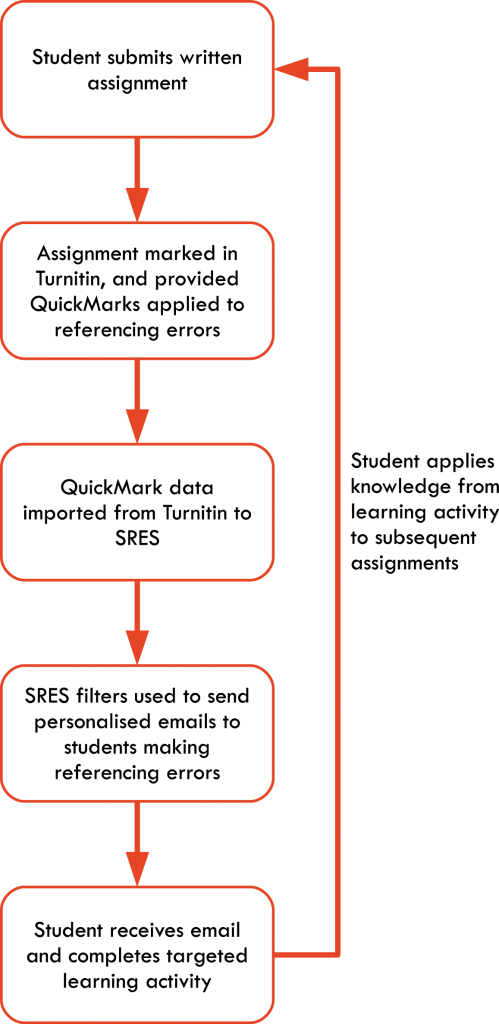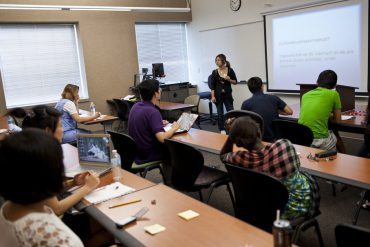The Library has put together a teaching and outreach initiative to provide personalised feedback and learning activities to students having difficulties with referencing in written assignments. Instead of delivering the same support to all students within a cohort, we are delivering targeted support to select students who require this support. This targeted approach is enabled through a combination of technologies in use at the University, including the Learning Management System (LMS), Turnitin and the Student Relationship Engagement System (SRES). The initiative has been running as a pilot for Semester 1, 2017, and we are looking to expand out to further Units of Study for Semester 2 and beyond.
The Library has been working with Unit of Study Coordinators to provide predefined Turnitin QuickMarks to teaching staff that address three common referencing issues. After assignments are marked, QuickMark data is imported into SRES, allowing us to identify which students consistently fail to document sources or utilise the work of others in a scholarly fashion in their essays or research papers. These students then receive targeted learning activities via email, which help them to think through the purpose of referencing and develop better scholarly communication practices.

For example, a student who cited non-scholarly sources and cited some sources incorrectly would receive the following email:
Dear [student’s preferred name],
In your recent assignment some of the sources you cited were not scholarly. You also made some errors in applying the Harvard referencing system (also known as the ‘author-date’ referencing system).
What is a scholarly source?
Scholarly sources are written by people with good subject knowledge and are often peer reviewed. Peer reviewed sources have been checked by experts in the subject for accuracy and quality before being published.
Please use the REVIEW criteria to establish whether a source is scholarly. You can learn how to apply REVIEW with the Library’s 10 minute Scholarly versus Non-Scholarly resources tutorial.
How do I reference?
The Library’s Referencing and citation styles: Harvard subject guide provides an overview of the Harvard referencing system.
Regards,
[Tutor’s name]
In addition to providing materials for this teaching initiative, we are also collecting data to evaluate its efficacy. Our aim is to determine whether and how the targeted, personalised learning activities provided by the Library improve the student learning experience and build capacity for better scholarly communication in subsequent written assignments. We are collecting data on whether students access the provided learning materials, and if they make the same mistakes in later assignments. We are also interested in determining how providing this kind of support impacts upon the teaching experience of academic teaching staff.
To be involved, a Unit of Study must include at least two written assignments where referencing is a marked component. If you are interested in the initiative, or know of a Unit of Study that would be a good candidate, please contact Kate Masters by Friday, July 14th.
Email: [email protected]
Phone: 8627 4257





